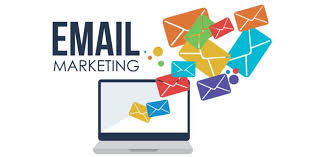Introduction
In today’s fast-paced digital world, effective advertising is crucial for the success of any business. The art of persuasion through copywriting has evolved over the years, adapting to changing consumer behaviors and technology advancements. In this blog post, we will delve into the fascinating world of advertising trends and explore the key techniques that make copywriting a powerful tool in marketing. Whether you’re a seasoned marketer or a beginner, this guide will help you sharpen your copywriting skills and craft compelling content that converts.
Understanding the Power of Persuasion
The Psychology of Persuasion
The foundation of effective copywriting lies in understanding the psychology of persuasion. It’s essential to tap into the emotions and desires of your target audience. Some key psychological principles to consider include:
1.1. The Power of Storytelling
– Storytelling is a timeless technique that engages readers on a personal level.
1.2. Social Proof
– People tend to trust products or services endorsed by others. Utilize testimonials, reviews, and case studies.
1.3. Scarcity and Urgency
– Creating a sense of urgency or scarcity can drive action. Limited-time offers and stock availability messages are effective examples.
1.4. Authority
– Position yourself or your brand as an expert in your industry to build trust and credibility.
Effective Copywriting Techniques
Crafting Irresistible Headlines
Your headline is the first impression you make on potential readers. It should be attention-grabbing and promise value. Here are some tips for creating irresistible headlines:
2.1. Use Numbers and Lists
– «10 Proven Techniques for Boosting Sales» is more compelling than «Boost Your Sales.»
2.2. Ask Questions
– Questions pique curiosity and engage readers. «Are You Making These Copywriting Mistakes?» is a good example.
2.3. Address Pain Points
– Identify the problems your audience faces and promise solutions in your headline.
The Importance of Clarity and Conciseness
In the age of information overload, clarity and conciseness are paramount. Your copy should convey your message clearly and efficiently:
3.1. Avoid Jargon
– Write in plain language that everyone can understand.
3.2. Break Up Text
– Use subheadings, bullet points, and short paragraphs to make your content more scannable.
3.3. Edit Ruthlessly
– Remove unnecessary words and phrases to keep your copy concise.
The Art of Persuasive Writing
4.1. Use the AIDA Model
– Attention, Interest, Desire, Action. Guide your readers through these stages in your copy.
4.2. Write with Empathy
– Show empathy towards your readers’ problems and offer solutions.
4.3. Harness the Power of Benefits
– Focus on the benefits of your product or service, not just its features.
Conclusion
In the ever-changing landscape of advertising, mastering the art of persuasion through effective copywriting is a skill that can set you apart from the competition. By understanding the psychology of persuasion, crafting irresistible headlines, prioritizing clarity and conciseness, and embracing persuasive writing techniques, you can create marketing content that not only engages your audience but also drives conversions. So, go ahead, explore the evolving advertising trends, and start crafting compelling copy that leaves a lasting impression on your target audience. Your marketing success awaits!
If you are interested in our services through this article, please contact us.Our allies: Tesis Dominicanas | Other Company





